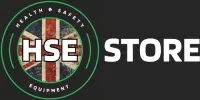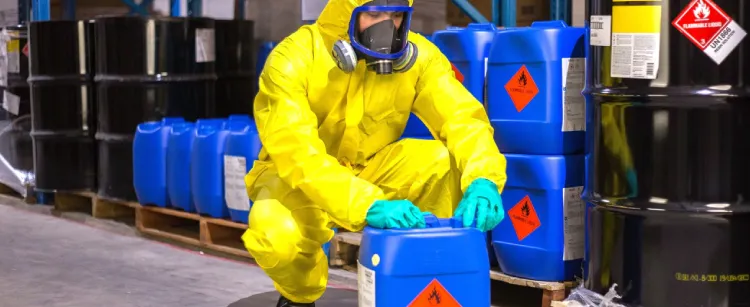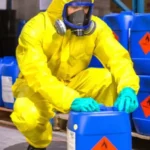Introduction to COSHH Compliance: Why It Matters for Workplace Safety
The Control of Substances Hazardous to Health (COSHH) regulations are designed to protect employees and others in the workplace from exposure to hazardous substances. These regulations, enforced by the UK’s Health and Safety Executive (HSE), play a crucial role in preventing workplace-related illnesses and accidents. Implementing COSHH compliance is essential not only to meet legal requirements but also to create a safer work environment, thereby fostering a culture of health and safety. Compliance with COSHH can help reduce the risk of illnesses caused by exposure to toxic substances, such as respiratory issues, skin conditions, and long-term conditions like cancer.
COSHH compliance involves understanding the hazards posed by various substances, performing comprehensive risk assessments, and implementing appropriate safety measures. By following COSHH guidelines, employers can identify specific risks associated with their workplace and establish controls to protect employees and contractors alike. This regulatory framework applies to a wide range of industries, including manufacturing, healthcare, construction, and agriculture, each of which may use different hazardous substances that require careful management to minimise health risks.
Effective COSHH compliance has benefits that extend beyond legal adherence. Ensuring a safe workplace leads to increased productivity, higher employee morale, and reduced absenteeism. When employees feel safe, they are more likely to remain focused and engaged in their work. As a result, COSHH compliance is not just a legal obligation; it is a core element of a healthy, productive, and sustainable workplace environment.

Understanding Hazardous Substances: The Core of COSHH Regulations
Hazardous substances are defined by COSHH as any chemicals, materials, or biological agents that pose a risk to health. These substances can include liquids, powders, gases, or biological agents that may be toxic, corrosive, or allergenic. Hazardous substances can be found in a wide range of everyday products, from cleaning agents to industrial solvents, as well as by-products of work processes like dust, fumes, and vapours. According to the HSE, understanding the nature and impact of these hazardous substances is the foundation of COSHH compliance.
To ensure safety, each hazardous substance must be evaluated for its potential risks. This often involves consulting Safety Data Sheets (SDS) for specific information on the health risks and recommended control measures associated with each substance. For instance, substances may pose risks of skin irritation, respiratory issues, or long-term diseases. By understanding the specific hazards associated with each material, employers can better determine what protective measures are necessary.
Effective hazardous substance management includes maintaining an updated inventory of all chemicals and substances used in the workplace. Each item should be evaluated for its hazards, and employees should be informed of the risks associated with handling these substances. This transparency not only ensures compliance but also creates a culture where safety is prioritised, and everyone in the workplace is aware of potential hazards.
Step 1: Conducting a COSHH Risk Assessment
Conducting a COSHH risk assessment is a fundamental step in identifying and controlling workplace hazards. A COSHH risk assessment is a detailed process that involves evaluating all substances used in the workplace, determining the potential for harm, and identifying how exposure can be minimised. The HSE recommends that risk assessments consider both routine operations and unexpected events that could lead to exposure.
A comprehensive risk assessment should examine factors such as the quantity and concentration of each hazardous substance, the manner of its use, and the potential for exposure through inhalation, ingestion, or skin contact. It’s important to assess not only the substances themselves but also any by-products produced during work processes, such as dust or fumes from cutting and welding. The assessment should be documented, regularly reviewed, and updated whenever changes in processes or substances occur.
Once hazards are identified, employers must establish control measures to minimise the risks. This may include implementing safer work practices, limiting employee exposure to high-risk areas, or investing in engineering controls like ventilation systems. Periodic reviews ensure that the risk assessment remains effective, especially if there are any modifications to workplace processes or new substances introduced.

Step 2: Ensuring Accurate Safety Data Sheets (SDS) Are Available
Safety Data Sheets (SDS) provide essential information on the properties, hazards, handling, and emergency measures associated with hazardous substances. Under COSHH, employers are required to ensure that SDS are available and accessible for all hazardous materials used in the workplace. These sheets are essential for COSHH compliance, as they offer detailed information that can help employers implement effective control measures and train employees on safe handling practices.
An SDS includes critical information such as the chemical composition of a substance, potential health hazards, safe handling and storage instructions, and steps to take in case of an emergency. Employers must ensure that all employees working with hazardous substances are familiar with the information provided in the SDS, and that these sheets are stored in an easily accessible location. This is especially crucial for emergency response personnel who may need immediate access to SDS information in the event of an accident.
Regularly reviewing and updating SDS for each substance is a best practice for maintaining compliance. As manufacturers and suppliers update their information, employers should also ensure that the SDS library in their workplace is current. This approach not only helps in COSHH compliance but also serves as a valuable resource for employee training and ongoing safety education.

Step 3: Identifying and Implementing Suitable Control Measures
After conducting a risk assessment, the next step is to implement control measures that minimise exposure to hazardous substances. According to COSHH guidelines, employers should follow a hierarchy of control that prioritises measures like elimination, substitution, engineering controls, and administrative controls before resorting to Personal Protective Equipment (PPE). The goal is to manage hazards in a way that minimises risk without relying solely on PPE, which is seen as a last line of defence.
One effective control measure is the use of engineering controls, such as local exhaust ventilation (LEV) systems, which capture and remove hazardous substances directly at their source. LEV systems are particularly effective in workplaces where airborne contaminants, such as dust or fumes, pose a risk. In addition, administrative controls, such as restricted access to certain areas or limiting the duration of exposure, can be highly effective when paired with other control measures.
Each control measure should be tailored to the specific risks associated with the substance and the work environment. For example, in workplaces where employees are exposed to dangerous vapours, an LEV system combined with strict procedural controls can significantly reduce exposure. Regular maintenance and inspection of these control systems are also necessary to ensure they remain effective over time.
Step 4: Selecting the Right Personal Protective Equipment (PPE)
PPE is a critical aspect of COSHH compliance, although it should be used as a last resort after other control measures have been implemented. PPE includes items such as gloves, masks, goggles, and protective clothing that protect workers from direct contact with hazardous substances. According to the HSE, employers must provide appropriate PPE when other measures cannot fully mitigate the risk of exposure.
Selecting the right PPE involves understanding the specific hazards of the workplace and choosing equipment that provides adequate protection. For example, handling corrosive chemicals may require chemical-resistant gloves, while working with airborne particles may necessitate respirators. Employers should ensure that PPE fits properly, is comfortable for employees to wear, and meets industry standards for quality and durability.
Employees must also be trained on the correct use, maintenance, and storage of PPE. Regular inspections and replacements are necessary, as damaged or worn PPE can compromise safety. By investing in high-quality PPE and emphasising its proper use, employers can further protect their workforce and maintain COSHH compliance.

Step 5: Establishing Procedures for Safe Storage and Handling
Proper storage and handling of hazardous substances are vital to minimising risk in the workplace. Safe storage procedures involve keeping substances in appropriate containers, clearly labelling them, and storing them in designated areas that minimise the risk of accidental exposure. The HSE recommends separating incompatible substances to prevent reactions and ensuring that storage areas are well-ventilated.
Handling procedures should be designed to prevent spills, leaks, or accidental contact with hazardous substances. Employees should be trained on safe handling techniques, including using spill containment equipment and following protocols for safe disposal. Additionally, employers should provide secondary containment for larger volumes of hazardous substances to prevent environmental contamination in the event of a leak.
Routine checks of storage and handling procedures help ensure compliance with COSHH regulations. By enforcing these procedures, employers create a safer environment and reduce the likelihood of accidents and exposure incidents.
Step 6: Training Employees on COSHH Compliance and Safety
Employee training is a cornerstone of COSHH compliance. All employees who work with or near hazardous substances should be thoroughly trained on the risks, control measures, and emergency procedures associated with these materials. The HSE emphasises that training should be ongoing, with updates whenever new hazards are introduced or existing ones change.
Effective training should cover the specific hazards of each substance, safe handling techniques, and the proper use of control measures and PPE. Employees should also understand emergency procedures, including how to respond to spills, accidental exposure, or equipment malfunctions. Clear, accessible training materials and hands-on instruction are particularly effective in ensuring that employees retain this crucial information.
Beyond initial training, regular refresher courses reinforce safety practices and keep employees informed of any updates to COSHH regulations. By maintaining a well-trained workforce, employers can significantly reduce the risk of accidents and foster a safety-conscious culture within the organisation.
Step 7: Regular Monitoring and Reviewing of Control Measures
COSHH compliance is not a one-time achievement; it requires continuous monitoring and review of implemented control measures to ensure ongoing safety. Regular monitoring helps identify whether control measures are still effective and highlights any gaps that might have developed over time due to changes in substances, processes, or workplace layout. The HSE recommends periodic assessments of control measures, as well as adjustments to address any issues promptly.
Monitoring can include air quality testing to measure concentrations of hazardous substances, inspections of engineering controls like ventilation systems, and reviewing records of incidents or near-misses involving hazardous substances. Additionally, keeping detailed records of these activities can be valuable for future risk assessments and for demonstrating compliance to regulatory bodies during inspections.
Employers should set a schedule for reviewing control measures and involve employees in the process. Employee feedback is invaluable, as they are often the first to notice inefficiencies or new risks associated with daily tasks. By involving the workforce in these reviews, employers promote a culture of shared responsibility and continual improvement.
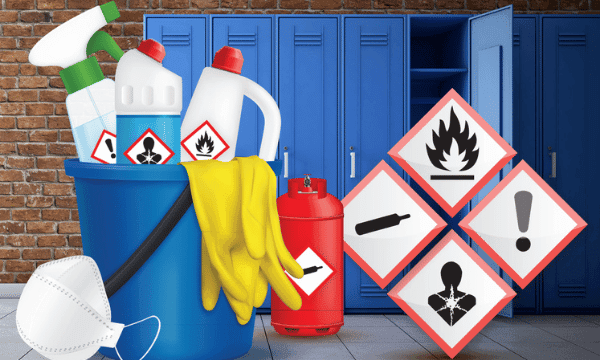
The Role of Emergency Procedures in COSHH Compliance
Emergency procedures are a crucial aspect of COSHH compliance, as they prepare employees to respond quickly and effectively to incidents involving hazardous substances. These procedures should cover a range of potential scenarios, including spills, leaks, fires, and accidental exposure. A well-developed emergency plan can significantly reduce the severity of incidents, limit exposure, and prevent health risks from escalating.
Emergency procedures should be clearly communicated to all employees and regularly rehearsed through drills. COSHH regulations emphasise the need for clear labelling, signage, and access to necessary emergency equipment, such as eyewash stations, spill kits, and fire extinguishers. Employees should also be trained on how to use personal protective equipment (PPE) in emergency situations, as it may differ from PPE used in regular operations.
Effective emergency procedures require ongoing evaluation. For instance, after an incident, a debriefing process should be conducted to identify any improvements that could enhance future responses. This proactive approach not only aids in compliance but also demonstrates a strong commitment to workplace safety.
Common Mistakes to Avoid in COSHH Compliance
While COSHH compliance may seem straightforward, there are several common pitfalls that can hinder an organisation’s safety efforts. One frequent mistake is overlooking substances that may not initially seem hazardous, such as cleaning agents or dust from woodworking. Employers should assess all substances used in the workplace, as some seemingly benign materials can have serious health impacts over time.
Another common error is underestimating the importance of employee training. Without proper training, even the most thorough risk assessment and safety measures can fail to protect employees. Employees need to understand the risks, know how to use PPE, and follow established handling procedures. Neglecting to keep training up to date, especially when new substances or processes are introduced, can create safety vulnerabilities.
Failure to regularly review and update risk assessments is another critical mistake. Changes in workplace processes, staffing, or materials can render existing control measures inadequate, so it’s essential to re-evaluate these assessments periodically. By recognising and addressing these common mistakes, employers can enhance their COSHH compliance and create a safer work environment.
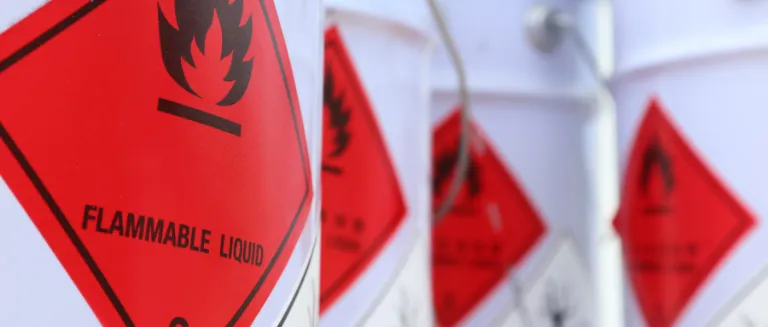
The Benefits of Achieving COSHH Compliance in the Workplace
Adhering to COSHH regulations offers numerous advantages that extend beyond basic legal compliance. One of the primary benefits is the reduction in workplace accidents and health issues, which directly contributes to improved productivity and lower absenteeism. Employees are less likely to suffer from illnesses related to hazardous substance exposure, which in turn reduces time off work and minimises disruptions.
COSHH compliance also promotes a positive workplace culture, as employees feel valued and protected when their health and safety are prioritised. A safe workplace fosters trust, which can lead to higher morale, better job satisfaction, and greater employee retention. Moreover, COSHH-compliant companies are more attractive to potential employees, helping to attract talent and reduce hiring costs.
From a business perspective, COSHH compliance can protect an organisation’s reputation and financial stability. Non-compliance can lead to severe penalties, legal fees, and reputational damage, especially if negligence results in a significant incident. By achieving and maintaining COSHH compliance, businesses can demonstrate their commitment to ethical practices and employee welfare, which benefits them both internally and in the broader marketplace.
Conclusion: Ensuring Ongoing COSHH Compliance for Long-Term Safety
COSHH compliance is an ongoing responsibility that requires commitment, vigilance, and a proactive approach to workplace safety. By following the essential steps outlined in COSHH regulations—such as conducting risk assessments, ensuring the availability of Safety Data Sheets, implementing control measures, and training employees—employers can create a safe environment that minimises the risks associated with hazardous substances. The benefits of this approach are significant, ranging from reduced illness and absenteeism to a more positive workplace culture and enhanced productivity.
Regular monitoring, reviewing control measures, and keeping up-to-date with changes in COSHH regulations are crucial to maintaining compliance. This process involves the entire workforce, as employees play an essential role in identifying hazards and implementing safe practices. By fostering a safety-conscious culture, organisations can ensure that COSHH compliance remains a priority and that workplace safety is continually improved.
In conclusion, COSHH compliance is not merely a legal requirement; it is a comprehensive approach to safeguarding health and wellbeing. Employers who prioritise COSHH compliance demonstrate a commitment to the welfare of their employees and the sustainability of their operations. For more information on COSHH and best practices, employers can consult the Health and Safety Executive (HSE) COSHH website and other reputable resources for guidance.

FAQ's
What is COSHH, and why is it important in the workplace?
COSHH stands for Control of Substances Hazardous to Health, a UK regulation designed to protect workers from health risks related to hazardous substances. By adhering to COSHH, workplaces can prevent injuries and illnesses, ensuring a safe and healthy environment for employees.
What types of substances are covered under COSHH?
COSHH covers various hazardous substances, including chemicals, dust, fumes, gases, biological agents, and nanomaterials. These can be found in common products like cleaning agents or as by-products of work processes, such as dust from sanding. COSHH does not cover lead, asbestos, or radioactive substances, which are regulated separately.
How do I conduct a COSHH risk assessment?
A COSHH risk assessment involves identifying hazardous substances in the workplace, assessing the risks they pose, and implementing measures to control them. Employers must consider how substances are used, potential exposure levels, and the effectiveness of existing controls.
What is a Safety Data Sheet (SDS), and why is it needed for COSHH?
Safety Data Sheets (SDS) provide detailed information on hazardous substances, including their properties, potential health risks, safe handling, storage, and disposal. Under COSHH, employers must ensure SDSs are available for all hazardous substances, as they are essential for conducting risk assessments and training employees.
What are control measures under COSHH, and why are they necessary?
Control measures are strategies to limit exposure to hazardous substances, including engineering controls like ventilation, safe work practices, and Personal Protective Equipment (PPE). These measures are essential for reducing risks and ensuring employee safety.
What PPE is required under COSHH regulations?
Personal Protective Equipment (PPE) varies depending on the type of hazardous substances and the level of exposure risk. Common PPE includes gloves, goggles, respirators, and protective clothing. Employers must select appropriate PPE based on risk assessment results.
How should hazardous substances be stored according to COSHH?
Hazardous substances should be stored in labelled, sealed containers in a secure area. Some may require temperature control, ventilation, or restricted access. Proper storage minimises the risk of leaks, spills, or accidental exposure.
What training do employees need under COSHH regulations?
COSHH requires employers to train employees on identifying hazardous substances, understanding associated risks, and safely handling, storing, and disposing of these substances. Training also covers the use of PPE and emergency procedures.
How often should COSHH risk assessments be reviewed?
COSHH risk assessments should be reviewed regularly, particularly when there are changes to work processes, substances, or legislation. Regular reviews ensure that control measures remain effective and up-to-date with any new risks.
What are common COSHH compliance mistakes to avoid?
Common mistakes include failing to identify all hazardous substances, inadequate employee training, and neglecting to update risk assessments. Overlooking any of these can lead to unsafe conditions and non-compliance with COSHH regulations.
What are the benefits of COSHH compliance for a business?
COSHH compliance reduces workplace accidents, enhances productivity, and protects employee health. It also demonstrates a commitment to safety, improves morale, and prevents legal issues that may arise from non-compliance.

